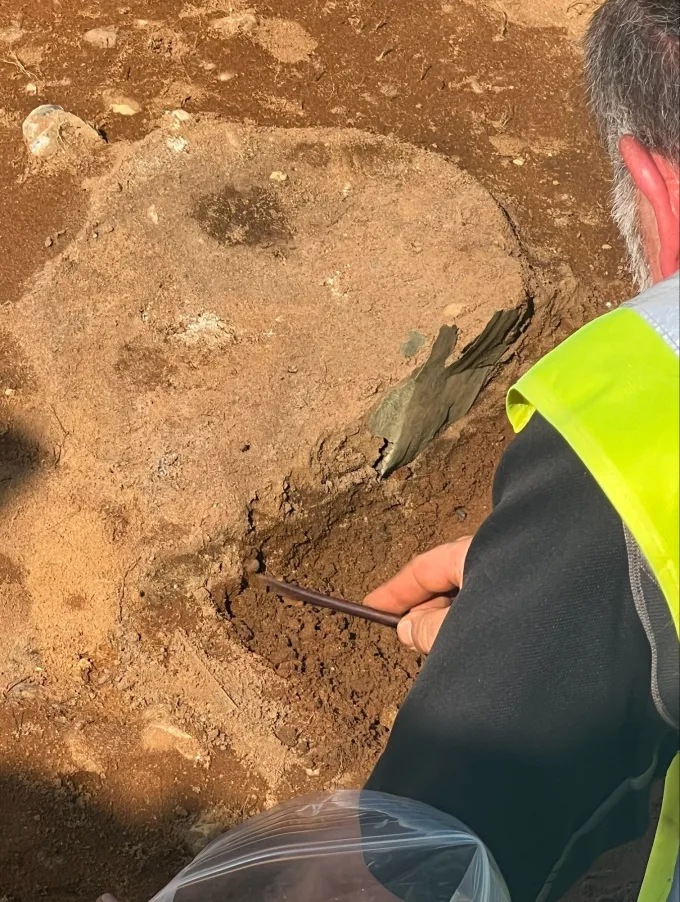NEWS
New excavations reveal missing pieces of intriguing artifact at Sutton Hoo

Excavations and metal-detecting work at the site of a famous ship burial in Suffolk, England, have revealed missing pieces that could help archaeologists better understand an intriguing but incomplete sixth century artifact.
A team of archaeologists, volunteers and conservators unearthed additional fragments of a Byzantine bucket at Sutton Hoo, where the discovery of the ship burial in the late 1930s changed the way historians understand Anglo-Saxon life.
Made from a thin sheet of copper alloy, the bucket depicts a North African hunting scene that features warriors with a range of weaponry as well as lions and a hunting dog. A Greek inscription that runs around the top reads, “Good health Master Count, for many happy years.” The lettering helped researchers date the vessel to the sixth century.
Experts have meticulously cleaned, reshaped and mounted pieces of the Bromeswell bucket previously found in 1986 and 2012, and they are on display in the High Hall exhibition at the site to show visitors what the bucket once looked like
Now, new research at Sutton Hoo has not only uncovered more fragments that belong to the bucket but also offered fresh insight into the history of the vessel that once traveled from a part of the Byzantine Empire called Antioch, located in modern-day Turkey, to the eastern coast of Britain.
“It’s kind of like a jigsaw puzzle that’s been added to over the years,” said Laura Howarth, archaeology and engagement manager for the National Trust’s Sutton Hoo site.
Assembling an ancient puzzle
A tractor harrow first unearthed pieces of the artifact by accident in 1986 when the Tranmer family owned the Sutton Hoo estate before it was part of the National Trust.
Metal-detecting surveys in 2012 uncovered more pieces of the bucket.
Researchers are trying to determine whether modern agricultural practices disturbed and dispersed pieces of the bucket, or if it was purposefully left in pieces. Other graves have yielded parts of other buckets that appear to have been purposefully snipped into small fragments before being placed in the ground, Howarth said.
The research team also wants to know the purpose of the bucket. Was it buried as a luxury item within a grave, or did it store food, drink or cremated remains?
“It was kind of a luxury import coming in to (what is now) modern-day England, but just thinking about some of the Anglo-Saxons that would have held it or used it and may never have even seen a lion before or may not be able to read Greek and been like, ‘Wow, what is this?’” Howarth said.
Analysis remains underway for the new pieces found in June in freshly dug pits in Garden Field. Careful excavation revealed the pieces, which appeared to show a hand belonging to one of the figures on the bucket. The team made the decision to lift the pieces and surrounding soil “in block.”
Researchers dug out the large block around the bucket pieces, carefully wrapped it and placed it on a tray in order to conduct an analysis of the soil surrounding the fragments, Howarth said.
The soil analysis could help determine when the bucket was buried and how it was used.
Two other such Byzantine buckets have been found in England, including the Breamore bucket at the Rockbourne Roman Villa archaeological site and museum in Hampshire. The Breamore bucket, also featuring an ancient Greek inscription and armed warriors, was likely made in a workshop in Antioch in the sixth century.
The team used an X-ray fluorescence tool, which resembles a ray gun, to conduct a chemical and elemental analysis on the newfound fragments. The analysis confirmed that the pieces were part of the Bromeswell bucket.










